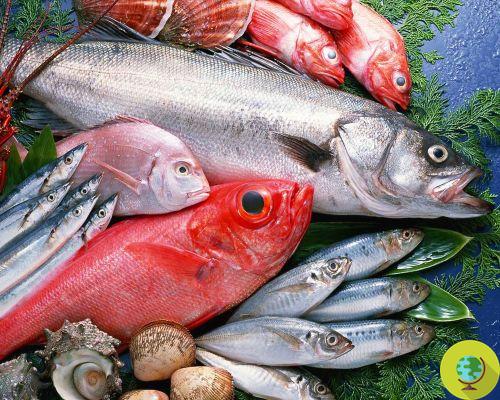
In fish that potentially end up on our tables, there are traces of antidepressants, antibiotics and pollutants present in sunscreens. Although much of the marine pollution is related to industrial and agricultural activities, many everyday products end up in the water
He is about to end up run over, his mother saves him
In fish that potentially end up on our tables, there are traces of antidepressants, antibiotics and pollutants present in sunscreens. Although much of the marine pollution is related to industrial and agricultural activities, many everyday products end up in the water.
Not all the effects of its fish have ever been thoroughly examined, but now a new study conducted by researchers from the Universidad del País Vasco has detected the presence of some drugs and sunscreens in the waters, evaluating their impact on marine fauna. The result? They accumulate in fish, compromising their health.
Spanish scientists have developed analytical methods for measuring the content of antidepressants, antibiotics and ultraviolet filters in water and fish. They conducted experiments in the Plentzia Maritime Station, evaluating the bioaccumulation of amitriptyline, ciprofloxacin and oxybenzone in sea bream. The accumulation of these contaminants in the tissues and fluids of animals, their transformation and effects at the molecular level were analyzed.
Coordinated by Haizea Ziarrusta, the research specifically found that amitriptyline (antidepressant), ciprofloxacin (antibiotic) and oxybenzone (sunscreen) can accumulate in fish. These contaminants had side effects in the plasma, brain and liver of the animals by interfering with their metabolism:
“We wanted to see the effects they caused in fish by analyzing the changes that occur in their metabolism,” Ziarrusta.
Scientists analyzed the changes that occurred in the sea bream after exposure to an environmentally relevant amitriptyline concentration for 7 days. The results revealed the appearance of oxidative stress in the brain and liver, but also other previously unknown alterations in energy metabolism.
There is still a lot of work to be done:
“The analytical approaches we have developed can also be used to investigate other types of pollutants and species; In this way, it is possible to collect crucial information to assess environmental risks and establish new regulatory measures ”, explains the scientist.
According to the researchers, the lack of information on the transformation and biodegradation of drugs and personal care products may lead to an underestimation of the true effects of fish exposure to these contaminants.
The study was published in Environmental Toxicology and Chemistry.
READ also:
- Do you know what lies behind intensive fish farming?
- Your tan destroys the coral reef: oxybenzone's fault
- Oceans to collapse: by 2050 there will be no more fish
Francesca Mancuso


























